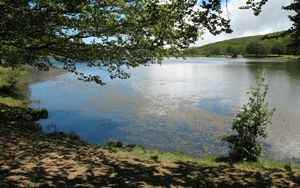(Finance) – “Turn on a lighthouse” on microplastics in Italian lakes, the microbial communities that colonize their surface and assess the risks for ecosystems, fish species and health. This is the goal of three studies conducted by a team of researchers from AENEAS And Cnr in collaboration with Schooner of the Lakes And Legambiente disseminated on the occasion of the World Environment Day of 5 June. The surveys, conducted on some of the lakes of the national territory, make it possible to bridge the knowledge gap on the impact of microplastics on fresh waters compared to the numerous studies conducted in the seas and oceans around the world.
The Education they are part of the wider context of activities for the protection of surface water resources. In fact, despite thewater covers almost 70% of our planet, the sweet superficial one, mostly used by the different uses anthropogenic, represents only 1.2% of the total. And it is precisely this small percentage, which is necessary to support and nourish 7.9 billion people it is the one increasingly at risk: according to UN estimates[1] by 2050, more than 5 billion human beings will be at risk of a lack of clean water due to continuous withdrawals, pollution, climate change, contamination by heavy metals, toxic substances and also increasingly microplastics.
For these reasons, starting from 2016, ENEA, in collaboration with Legambiente, has undertaken a path analysis, monitoring and study of the phenomenon of microplastics in lakes, plastic microparticles smaller than 5 mm, now considered emerging pollutants, present in a widespread way and in close relationship with the natural elements present in each ecosystem.
“The surveys we carried out with Legambiente in lakes Maggiore, Iseo and Garda, showed an average abundance of microplastics per km2 of 39,000, 40,000 and 25,000, respectively, similar to those found in some large American lakes and in some Swiss lakes. “, points out Maria Sighicelli of the Biodiversity and Ecosystem Services Laboratory of ENEA. “The investigations showed the dominant presence of fragments (about 74%), polystyrene balls (almost 20% of the total), polyethylene (45%) and polypropylene (15%), with higher concentrations near the input rivers and narrowing of the water basin “.
In subsequent campaigns, the collaboration of theWater Research Institute (IRSA) of Cnr of Rome (IRSA-CNR) for the study of biofilms associated with microplastics, the so-called platisphere, that is the set of microbial communities that colonize its surface, a topic of considerable scientific interest. In addition to some of the subalpine lakes such as Iseo, Como, Maggiore and Garda, the Trasimeno in Umbria and those of Bracciano and Paola in Lazio were investigated.
“Through molecular biology and laser scanning microscopy techniques that investigated the diversity and structure of the plastisphere, the microbial composition of the bacterial component of these communities was defined, from which it was found that it differs strongly from that of planktonic communities and that it mainly depends on the sampled lake, ”he says Francesca Di Pippo of the IRSA-CNR of Rome. “There is also evidence of the key role of some species which constitute the ‘core’ of these communities, and which are characteristics of biofilms present in many aquatic environments. Furthermore, the presence of bacteria involved in the biodegradation processes of plastics was highlighted, while studies are still underway aimed at understanding the mechanisms of adhesion of microorganisms to microplastics, biodegradation processes and the role of microplastics as a transport and transport vehicle. spread of antibiotic resistance genes, pathogenic microorganisms and / or microalgae toxic to aquatic organisms and to humans “.
The third study, conducted by an ENEA research team with the IRSA-CNR of Verbania, made it possible to evaluate the potential risks of the presence of microplastics for the health of fish species and, through their consumption, for humans. In particular, data was collected on the ingestion of microplastics by perch (Perca fluviatilis), one of the most widespread and commercially exploited freshwater species.
“From the lakes of Garda, Como, Orta and Maggiore we took 80 specimens of perch to quantify and analyze the microplastics present in the gastrointestinal tract through chemical and morphometric analyzes”, he underlines Silvia Galafassi of the IRSA-CNR of Verbania. “In 86% of individuals we found fragments of anthropogenic derivation, with the lowest averages in Lake Como (1.24 ± 1.04) and highest in Lake Garda (5.59 ± 2.61). The most frequently found polymers are those that are widely used in industry – polypropylene, polyethylene terephthalate (PET), polyamide and polycarbonate; moreover, in fish with a higher content of microplastics, a lower frequency of feeding was found, an effect that highlights how microplastics directly interfere with the predatory activity of perch, as already highlighted for other species “.
